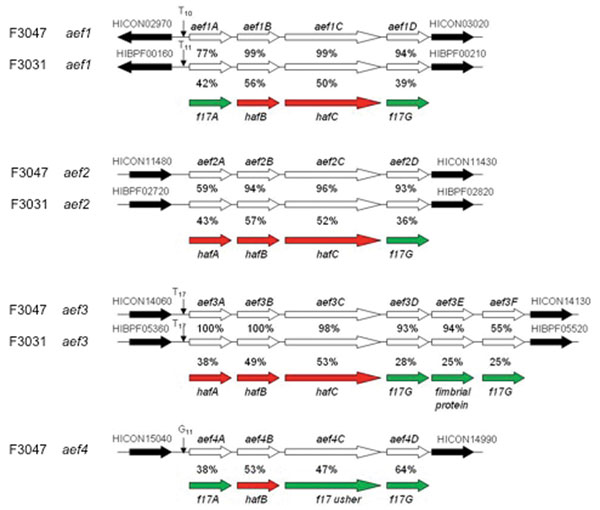Volume 18, Number 3—March 2012
Research
Lineage-specific Virulence Determinants of Haemophilus influenzae Biogroup aegyptius
Figure 4

Figure 4. aef fimbrial operons in Haemophilus influenzae biogroup aegyptius strains F3047 (1–4) and F3031 (1–3). The aef fimbrial genes in each putative cluster are indicated by open arrows, and the flanking genes by solid arrows. The genes encode aefA (a fimbrial protein), aefB (a fimbrial chaperone), aefC (a fimbrial usher protein), aefD (a fimbrial adhesion), and aef3E and aef3F (additional fimbrial adhesins). Simple sequence repeats in the promoter region for each gene cluster are shown. Percent sequence identity between the aef genes from F3047 and F3031 is given between respective genes. Percent identity to closest homologue in Hae (red arrows) or other organisms (green arrows) is shown by features below each operon. BPF, Brazilian purpuric fever; CON, conjunctivitis.
1Current affiliation: Stanford University, Palo Alto, California, USA.